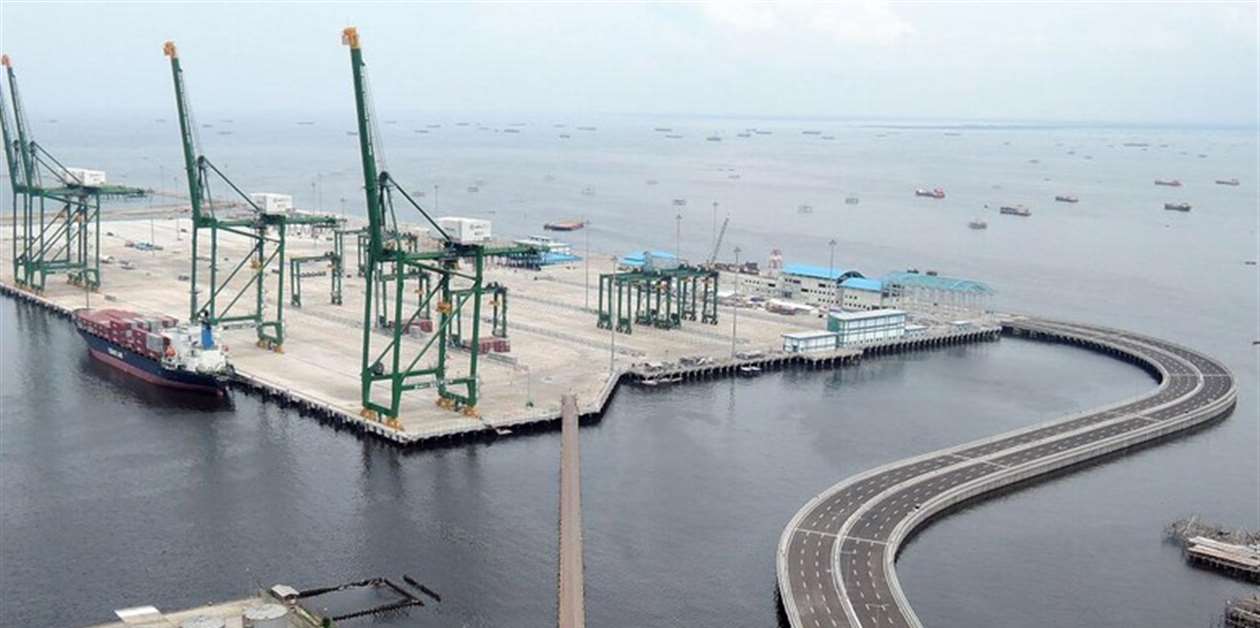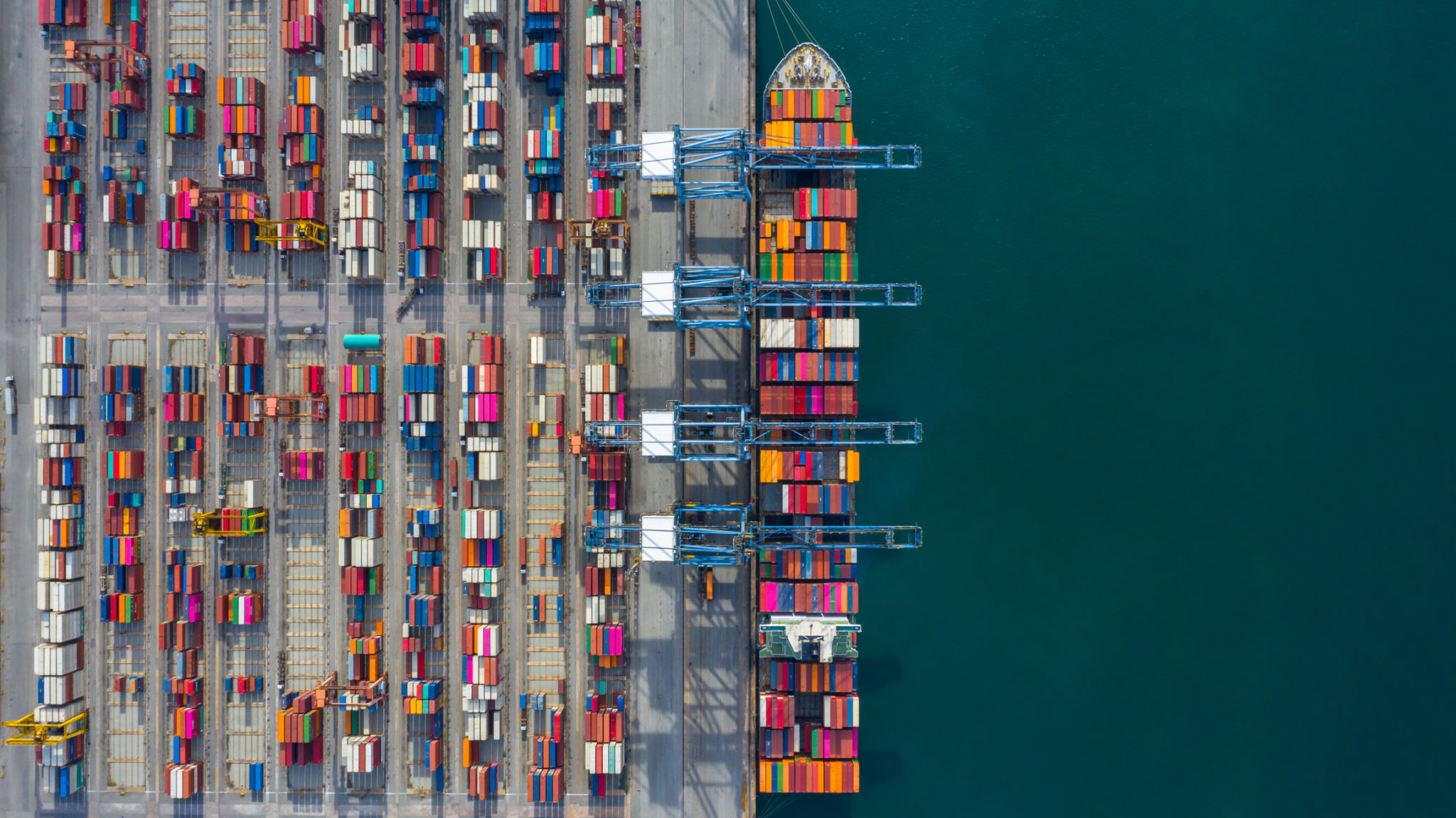Indonesia, a key player in Southeast Asia’s maritime sector, is home to over 111 commercial ports, with a select few standing out as major players due to their international reach and advanced infrastructure. Among these, the Port of Tanjung Priok shines the brightest, serving as Jakarta’s primary seaport and the most famous port in Indonesia. As the epicenter of the nation’s maritime trade, Tanjung Priok not only underscores Jakarta’s pivotal role in international logistics but also highlights the strategic importance of ports in Indonesia in driving economic growth and global trade connectivity.
This focus on maritime infrastructure paves the way for the emergence of Patimban Port, a promising new player in the landscape of ports in Indonesia. Positioned to complement the bustling activity of Tanjung Priok, Patimban Port represents the next step in Indonesia’s ambitious vision to enhance its maritime logistics and expand its trade horizons. As we transition towards discussing Patimban Port, it’s clear that this development is more than just an expansion of physical capacity; it’s a strategic move to bolster Indonesia’s position as a global maritime hub, offering new opportunities for investment and economic development.
Patimban Port at a Glance
The inception and evolution of Patimban Port is a key chapter in the story of ports in Indonesia, aimed at augmenting the nation’s logistics and transportation fabric. Conceived in the early 2000s with the objective to complement Tanjung Priok, Indonesia’s premier port, and to catalyze economic growth in West Java, Patimban Port transitioned from blueprint to reality and began operations in December 2020.
Today, Patimban Stands as one of Indonesia’s most advanced maritime projects, boasting state-of-the-art technology and infrastructure. With a strategic focus on automotive and agricultural exports, the port features specialized terminals, including a car terminal with a capacity to handle millions of units annually. The port is set to expand its facilities, aiming to reach a full capacity of 75 million TEUs (twenty-foot equivalent units) by 2027, making it one of the largest ports in the country.
In the vast archipelago of Indonesia, ports like Tanjung Priok in Jakarta and Tanjung Perak in Surabaya have long been pivotal in handling the country’s maritime traffic. However, Patimban Port brings a new dimension to the table with its modern infrastructure and strategic location.
1. Size and Capacity
Although Tanjung Priok remains the busiest among ports in Indonesia by traffic volume, Patimban’s envisaged capacity aims to match and possibly surpass this, providing a relief channel for the existing ports and enhancing the maritime handling capabilities of the country.
2. Infrastructure
Among ports in Indonesia, Patimban Port is heralded for its adoption of cutting-edge technologies in cargo handling and logistics. Its green initiatives, automated systems, and direct connectivity to a network of roads set a new standard for efficiency and sustainability in Indonesian maritime operations.
3. Strategic Importance
Patimban’s significance extends beyond its infrastructural prowess, it is poised to energize the economy of West Java and establish itself as a vital node in international trade routes. The port’s focus on automotive exports aligns with Indonesia’s ambitions to become a global automotive industry hub.
Introducing Patimban Port, The Next Biggest Port In Indonesia
Economic Implications of Patimban Port
As the latest addition to the ports in Indonesia, Patimban Port is strategically designed to complement the country’s national economic strategy. Positioned on the north coast of Java, the port is envisioned to alleviate congestion at Tanjung Priok, enhance logistics efficiency, and support the government’s ambition to distribute economic growth more evenly across the archipelago.
The operationalization of Patimban Port carries significant promises for both local and national economic development. On a national scale, it’s expected to enhance Indonesia’s trade balance by optimizing export-import activities, thanks to its high capacity and state-of-the-art facilities among ports in Indonesia. Locally, Patimban Port is a catalyst for transforming the economic landscape of West Java and surrounding areas, promising to stimulate growth in industries reliant on efficient maritime logistics.
One of the most tangible benefits of Patimban Port is its potential for job creation and skill development within the region. The establishment of one of the most advanced ports in Indonesia is anticipated to generate thousands of direct and indirect job opportunities, from operational roles within the port to ancillary services and industries that will burgeon around this maritime hub. Furthermore, the introduction of advanced technologies and systems at the port provides a unique platform for skill development and capacity building among the local workforce, preparing them for the future demands of the maritime and logistics sectors.
Investment Opportunities Near Patimban Port
The strategic positioning of Patimban Port, coupled with its state-of-the-art facilities, has set the stage for a surge in investment in several key sectors, including the following sectors.
1. Logistics
Logistics is at the forefront, with the port acting as a pivotal hub for both domestic and international trade flows. Investment in warehousing, freight forwarding, and supply chain management services promises high returns due to the expected increase in cargo volume.
2. Manufacturing Sector
The manufacturing sector is another area presenting lucrative opportunities. With Indonesia aiming to boost its export capabilities, industries such as automotive, electronics, and textiles stand to benefit significantly from proximity to Patimban Port. The port’s advanced facilities ensure efficient handling of raw materials and finished products, making it an ideal base for export-oriented manufacturing units.
3. Export-oriented industries
Moreover, the development of Patimban Port is posed to attract investments in export-oriented industries. The port’s capability to handle large vessels and its focus on automotive exports specifically offer a unique advantage for industries looking to expand their international market reach.
Recognizing the potential of Patimban Port to transform the regional economy, the Indonesian government and local authorities have rolled out a series of incentives to attract investors. Tax breaks, streamlined business licensing processes, and infrastructure support are among the key measures designed to ease the entry and operation of business near the port.
Special Economic Zones (SEZs) and Industrial Parks are being developed in the vicinity of Patimban Port, offering additional benefits such as duty exemptions and import tax relief for businesses setting up operations within these zones. These initiatives are aimed at fostering a conducive investment climate, further bolstered by Indonesia’s strategic location in the global trading system and its commitment to enhancing the capabilities of ports in Indonesia.
Previously, the automotive sector had seen investment near Patimban Port, notably by Daihatsu. As a leading player in the automotive industry, Daihatsu has leveraged the port’s advanced logistics capabilities to optimize its supply chain, reduce operational costs, and expand its market reach. The company’s thriving operation near the port underscores the strategic advantage of proximity to such a significant maritime gateway, serving as an inspiring case study for other businesses considering investment in the region.
Challenges and Considerations
As Indonesia strengthens its maritime infrastructure with developments such as the Patimban Port, Indonesia faces a series of diverse challenges and considerations. Let’s delve into the challenges and considerations here.
1. Environmental Concerns and Sustainability
As Indonesia advances its maritime infrastructure, particularly with the development of Patimban Port, environmental sustainability remains a paramount concern. Recognizing this, sustainable development initiatives have become central to the port’s operational strategy. Efforts to minimize ecological impact include adopting green port standards, implementing waste management systems, and using technology to reduce emissions. These initiatives not only address environmental concerns but also set a precedent for future development projects among ports in Indonesia.
2. Infrastructure and Connectivity Challenges in the Region
Despite its strategic location and advanced facilities, the port’s potential is tethered to the adequacy of surrounding infrastructure. Roads, bridges, and rail links connecting Patimban to major industrial and urban centers require substantial upgrades to handle increased traffic and optimize logistics chains. Overcoming these challenges is crucial for maximizing the port’s efficiency and reinforcing its position among leading ports in Indonesia.
3. Navigating Regulatory and Bureaucratic Landscapes for Investors
Investors looking to capitalize on opportunities near Patimban and other ports in Indonesia must navigate a complex regulatory and bureaucratic landscape. The Indonesian government has made stripes in simplifying investment processes and improving the business environment. However, potential investors may still encounter regulatory hurdles and bureaucratic red tape, such as understanding and complying with local laws, and obtaining necessary permits. Initiatives aimed at streamlining administrative procedures and fostering a more investor-friendly climate are underway, promising to ease the path for future investments.
The Future of Manufacturing in Subang Smartpolitan

The rise of Subang Smartpolitan heralds a new era for the manufacturing sector. This development is not merely a testament to Indonesia’s industrial growth but also a clear indication of the future direction of manufacturing in the region. Subang Smartpolitan, with its cutting-edge infrastructure and proximity to Patimban Port, offers a plethora of strategic benefits for locating manufacturing facilities within its bounds.
Firstly, the proximity to one of the largest ports in Indonesia ensures manufacturers have swift and efficient access to both import and export channels, significantly reducing logistics costs and lead times. This advantage is critical for manufacturers aiming to maintain competitiveness in the global market.
Second, Subang Smartpolitan’s state-of-the-art infrastructure is designed to support the modern needs of the manufacturing sector. Its proximity to Patimban Port further enhances operational efficiencies, providing manufacturers with seamless connectivity to international shipping routes. Moreover, the well-planned logistics and industrial facilities within Subang Smartpolitan ensure that manufacturers can operate at peak efficiency, benefiting from the latest in industrial technology and supply chain solutions.
And last, the synergy between Patimban Port’s capabilities and the industrial environment of Subang Smartpolitan creates a conducive ecosystem for manufacturing excellence. This combination not only fosters operational excellence but also encourages innovation and sustainability in manufacturing practices.
Investing near Patimban Port, Subang Smartpolitan
The strategic positioning of Subang Smartpolitan near Patimban Port presents a compelling case for investment in the manufacturing sector. The symbiotic relationship between the port’s logistical capabilities and the smart city’s industrial infrastructure paves the way for operational efficiencies, global market access, and manufacturing excellence.
As one of the largest ports in Indonesia, investing near Patimban Port means more than just capitalizing on one of the largest ports in Indonesia, it’s about becoming part of a forward-thinking manufacturing landscape poised for exponential growth. With the Indonesian government’s support and a clear vision for the future, this region is set to become a hub for manufacturing excellence on a global scale.


